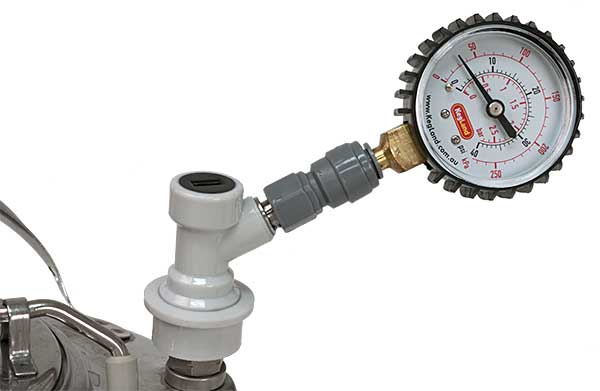IwanaBrich
Well-Known Member
I just built a 3 tap kegerator and I can't seem to get a good pour out of it. No matter what I try all I get is glasses of 80% foam.
My kegerator is made from a smallish upright Whirlpool refrigerator. It fits 3 Corny Kegs with the CO2 tank inside. It has 3 stainless steel Flow Control Intertap faucets using 4" stainless steel shanks that are installed through the door, The faucets are about 6" above the top of the kegs. Each tap has 15 feet of Accuflex Bev-Seal Ultra beer line and uses John Guest push to connect fittings. Even though the lines are rather stiff I've managed to coil them up neatly without any kinks. Before I put this together I visited a few web sites to help calculate the line lengths. All the sites all came in between 12 and 15 feet so I went with 15.
So far I varied the temp form 37°F to 45°F and the CO2 pressure between 10 and 20 PSI. I also tried varying the flow using the faucet control and each change in pressure or temp. Unfortunately, nothing helps, all I get is glasses of foam!
As for my beer, I forced carb my beer by setting the pressure up at 30 PSI for a few days (2 to 3), then I lower it to normal levels. Unfortunately I don't have any way of actually measuring the CO2 level in my beer. All I know is that I've done it this way for years using party taps (with 2 ft 3/16" lines) and I've never had a foam issue like this.
So now I'm at a loss what I should do next. Any suggestions???
Your thought and comments are appreciated.
My kegerator is made from a smallish upright Whirlpool refrigerator. It fits 3 Corny Kegs with the CO2 tank inside. It has 3 stainless steel Flow Control Intertap faucets using 4" stainless steel shanks that are installed through the door, The faucets are about 6" above the top of the kegs. Each tap has 15 feet of Accuflex Bev-Seal Ultra beer line and uses John Guest push to connect fittings. Even though the lines are rather stiff I've managed to coil them up neatly without any kinks. Before I put this together I visited a few web sites to help calculate the line lengths. All the sites all came in between 12 and 15 feet so I went with 15.
So far I varied the temp form 37°F to 45°F and the CO2 pressure between 10 and 20 PSI. I also tried varying the flow using the faucet control and each change in pressure or temp. Unfortunately, nothing helps, all I get is glasses of foam!
As for my beer, I forced carb my beer by setting the pressure up at 30 PSI for a few days (2 to 3), then I lower it to normal levels. Unfortunately I don't have any way of actually measuring the CO2 level in my beer. All I know is that I've done it this way for years using party taps (with 2 ft 3/16" lines) and I've never had a foam issue like this.
So now I'm at a loss what I should do next. Any suggestions???
Your thought and comments are appreciated.





